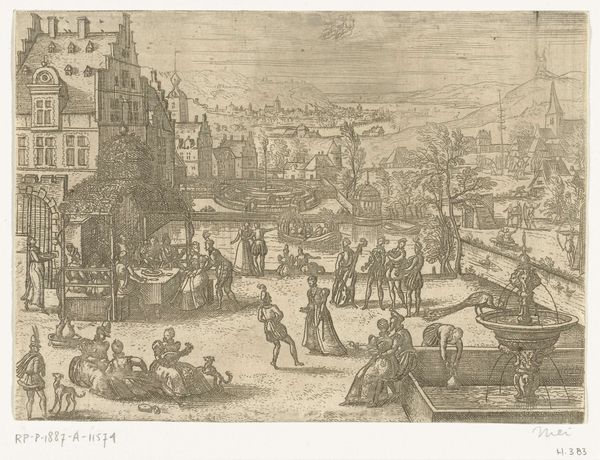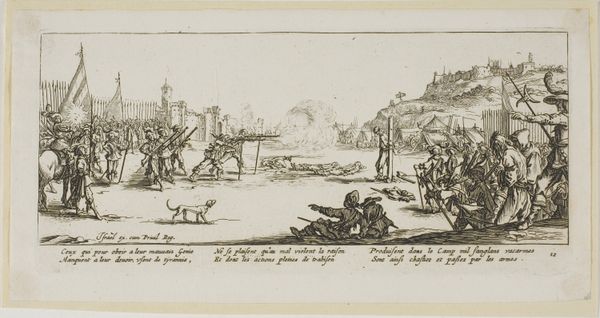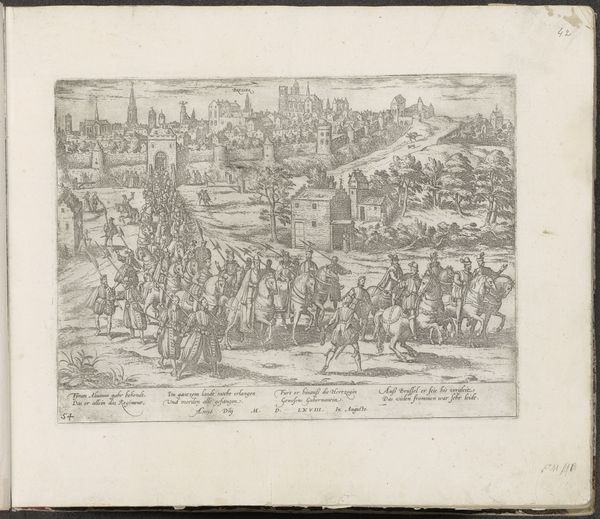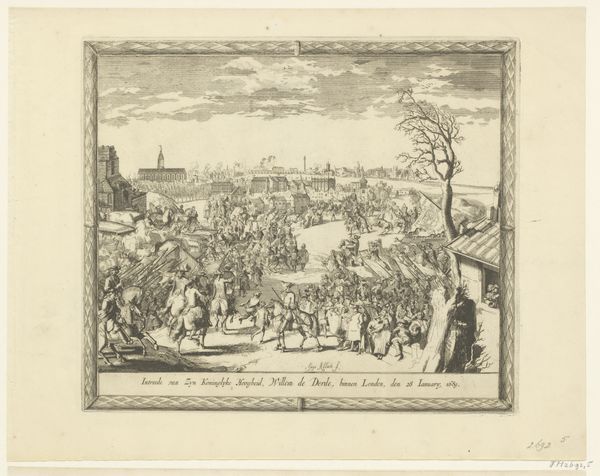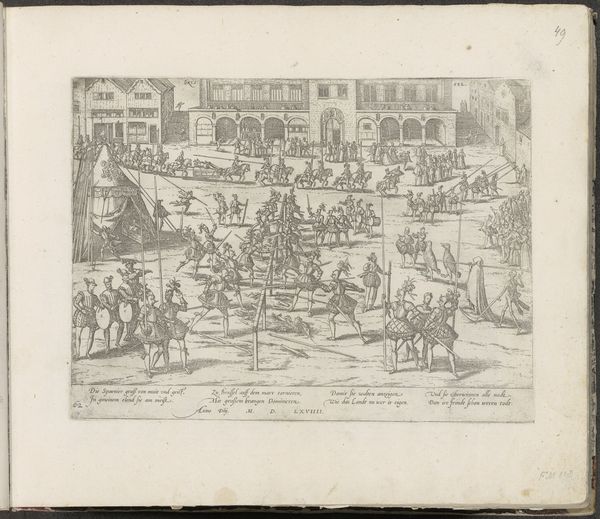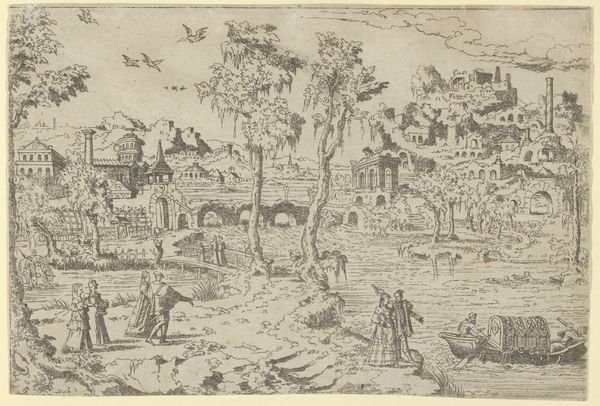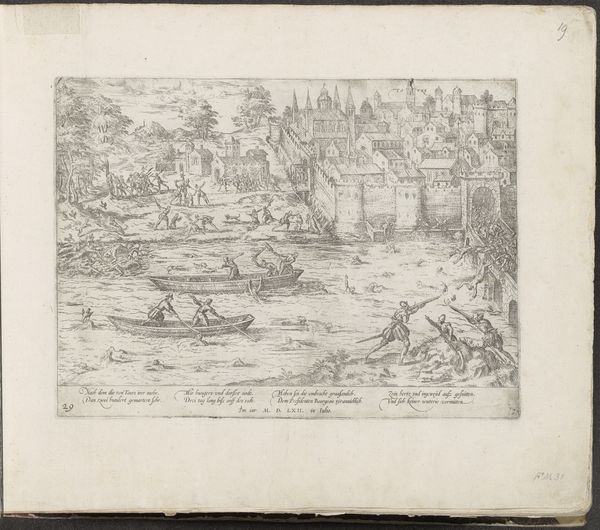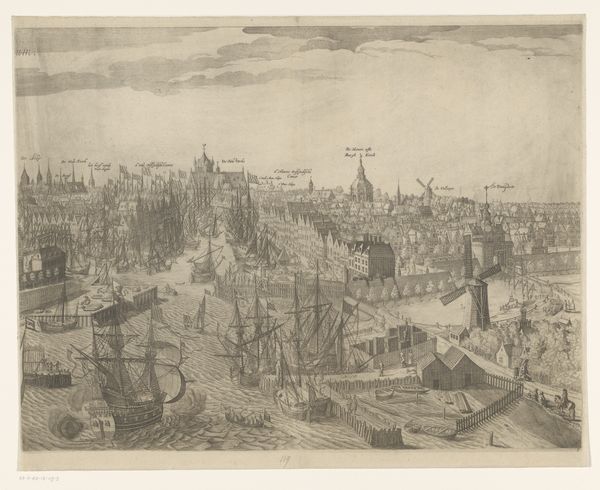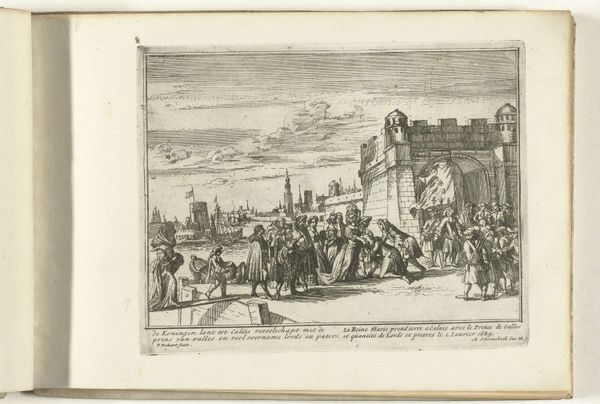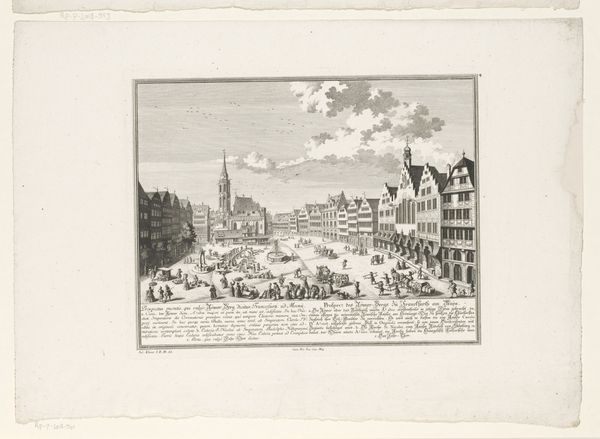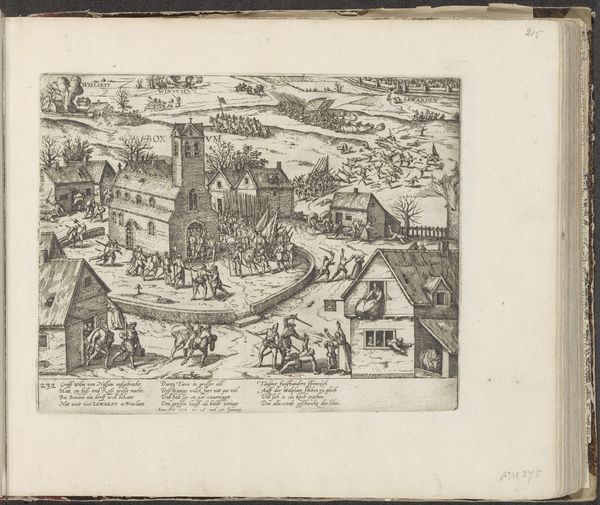
print, engraving
#
baroque
# print
#
cityscape
#
history-painting
#
engraving
Dimensions: height 136 mm, width 161 mm
Copyright: Rijks Museum: Open Domain
Editor: This print, "Plundering van Mechelen door de Hertog van Alva," created around 1615, shows a chaotic scene. There's so much going on! What elements of its composition stand out to you the most? Curator: Structurally, the artist has created a dynamic tension between the receding cityscape, meticulously rendered with detailed architecture, and the foreground’s teeming figures engaged in acts of violence and thievery. Semiotically, we can interpret the sharp contrasts of light and shadow not just as representational techniques, but as signifying the moral darkness associated with conflict and destruction. Editor: The perspective and level of detail almost make it feel like I am observing a stage production from afar. It looks like a freeze-frame in an unfolding historical tragedy. Curator: Indeed, and if we look closely at the use of line, it is used in several ways. Short, rapid lines delineate texture, specifically for garments, creating movement and volume. Longer, deliberate lines map out the precise lines and symmetry of city. The lines contribute to the organized chaos within the image. Do you notice how that contributes to a hierarchy, leading the eye? Editor: Yes, the precise city fading back, the violent subjects up close. Now that you mention the architecture, is it intended to contrast the rigidity of structure with disorder? Curator: Precisely. This reflects an essential theme within Baroque art: the fragile and momentary existence of order within a turbulent and unpredictable world. Also note that while the foreground action is indeed chaotic, it doesn’t overwhelm. It has structure within the chaos. What do you make of that? Editor: It's interesting to consider this “organized chaos” within a formalized structure—like it's about controlling what it means to fall into disarray. It also reveals an ability to accept conflicting viewpoints as part of something complete. Curator: A astute interpretation. By examining these visual properties, we begin to grasp the underlying ideology and values encoded in this print. Editor: Thank you for unveiling such hidden depths. I now view prints of the Baroque era with a fresh, critical awareness of its intrinsic values.
Comments
No comments
Be the first to comment and join the conversation on the ultimate creative platform.
